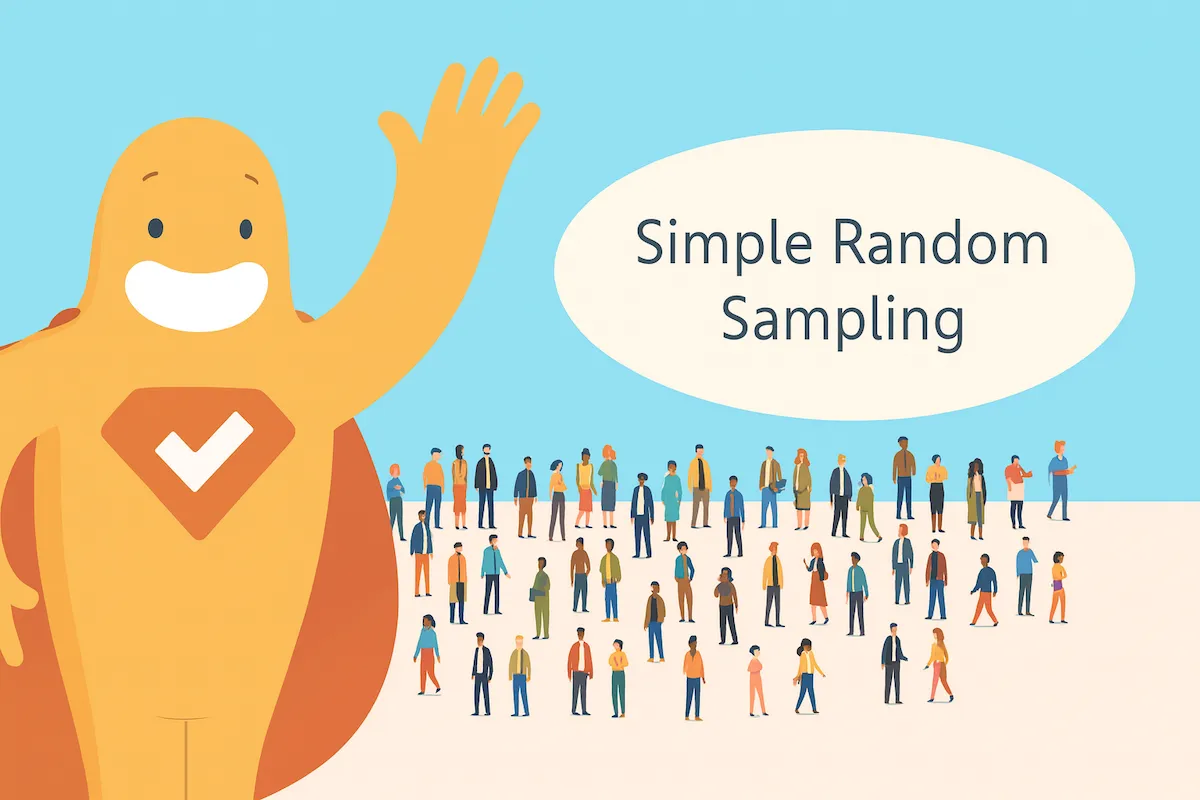Online award surveys with picture questions make voting more engaging, fair, and accessible for global audiences. With so many awards, contests, and elections held each year, visuals help surveys stand out and improve participation. Picture questions allow voters to easily recognize nominees, trigger emotional connections, and make quicker decisions, resulting in higher response rates and more reliable outcomes. Award surveys can be used for entertainment, industry recognition, internal company competitions, or public elections, and are easy to share via email, social media, or direct links. Using best practices—such as consistent image quality, fair ordering, and clear categories—ensures unbiased results. Platforms like SurveyLegend simplify creation, reuse, and analysis, making award surveys scalable and effective.
Create your award survey, form, or poll now!
Every year, thousands of awards events are held. Just think about the movie industry: There are the Academy Awards, Golden Globe Awards, Image Awards, MTV Movie Awards, People’s Choice Awards, SAG Awards, and more. And that’s just those held in the United States! There are hundreds more held in other countries as well. Of course, there are also awards in other industries, as well as elections and competition surveys. So how can you make an award survey that engages participants when there are so many events being held? With SurveyLegend, you can create custom award surveys or polls tailored to your specific event requirements, incorporating picture questions. By using picture questions for your online survey awards.
Create your award survey, form, or poll now!
Why Create an Online Award Survey with Picture Questions?
An awards form is necessary in order to present participants with nominees and/or candidates in particular categories. Juries consisting of professionals in the award category often choose the winner(s) of the awards. But often it’s the “people” who get to choose the winner.
That’s why creating an accessible form, survey, or poll for these types of competitions with awards is a must these days. It allows the award organizer to perform global research, asking fans from all over the world for their opinion on who will be the movie actor or musician of the year, and so on. This makes the voting process democratic and fair to the contestants, but also to their fans across the globe.
Create your award survey, form, or poll now!
Choosing the song of the year, movie of the year, newcomer of the year, the act of the year, and more has never been easier with online surveys that allow people to vote using picture questions. To make awards online, creating them is as easy as 1,2,3,4:
- Ask the question
- Upload images of nominees, contestants, or candidates
- Share the form, survey, or poll for instant online voting
- Send the form, survey, or poll to participants through various channels (such as email, social media, or direct links) to maximize reach and participation
Designing an Effective Survey
Designing an effective survey is the foundation for collecting meaningful data and making informed decisions. To create engaging surveys that truly resonate with your audience, start by defining the survey’s purpose and understanding who your participants are. Whether you’re measuring customer satisfaction, gathering opinions, or seeking feedback on new ideas, clarity is key. Keep your questions concise and straightforward, and use language that’s easy for everyone to understand.
Create your award survey, form, or poll now!
Incorporating pictures and visuals can transform a standard survey into an engaging experience, encouraging more participants to complete it and provide thoughtful answers. Organizations can leverage advanced survey platforms to create, distribute, and analyze surveys with ease. These platforms offer features and benefits such as customizable templates, logic and branching, and real-time analytics, making it simple to conduct surveys and extract valuable insights. By focusing on the right questions and using the right tools, you’ll be able to collect actionable data that helps your organization decide on the best path forward.
Types of Picture Questions
Picture questions are a powerful way to create engaging surveys that capture attention and drive participation. There are several types of picture questions you can use to make your online poll or survey stand out. Multiple-choice questions with images allow participants to choose their favorite option visually, while rating scales with pictures help users express their opinions in a more intuitive way. Open-ended questions with visual prompts can spark creativity and encourage more detailed answers.
Create your award survey, form, or poll now!
Modern survey platforms support a wide range of picture question formats, making it easy to design surveys that fit your specific categories and themes. You can ask participants to select from a curated set of images, or even invite them to upload their own pictures for a more personalized touch. This flexibility enables organizations to gather richer data and more diverse ideas from participants. With hundreds of categories and thousands of questions to choose from, picture questions help organizations and individuals collect opinions and insights that are both meaningful and easy to analyze.
Award Form with Picture Questions
Competitions, both local and global, happen all the time, regardless of the size of the event and the fanfare. Being a winner means you have done something great and worked hard for it. That’s why we feel the process for choosing a winner should be as fair as possible. Using an online form to collect votes saves you time and makes it easy for people to vote, leading to more votes collected and, as a result, a fairer decision is made. You can also save your custom-designed award forms or themes to reuse for future events, making the process even more efficient.
While the 2022 Oscars may have made the most news due to “the slap heard around the world,” there were still plenty of Oscar ballots created for Academy voters and the average movie-goer to predict a winner. However, most looked something like this:
Create your award survey, form, or poll now!
Now, consider this online survey that would allow people to vote on pictures, including a nice red curtain background and Oscar statuettes at the top for visual appeal. With this picture poll, the imagery helps trigger memories and emotions voters may have had about the films in question. This Oscars ballot form provides more engagement, which leads to a fairer outcome.
Learn about 5 common types of leading questions in surveys and why avoiding them ensures unbiased survey results.
Contest Poll with Picture Questions
Not all online surveys and picture polls highlight the winner of a major event. These tools are designed to engage real human participants, ensuring authentic and meaningful feedback. You can also conduct some for fun, which media outlets often do to engage with their readers. For example, superhero movies are extremely popular. Check out this survey that lets people vote for their favorite superhero using picture questions.
Survey with Picture Questions Created with SurveyLegend – including Multiple Selection question types.
Create your award survey, form, or poll now!
Election Ballot or Poll with Pictures
Who will be your next president, governor, mayor, or senator? That’s a great question, and you can get more accurate answers by allowing participants to vote on pictures. As with all important picture questions, it’s important to use a system that treats each candidate fairly (e.g., alphabetizing answers, using similarly sized and high-quality images, etc.) to avoid sampling bias.
Survey with Picture Questions Created with SurveyLegend
Create your award survey, form, or poll now!
Competitions Using Award Surveys
Today, there are thousands of industries, companies, and other entities creating award surveys with picture questions. Any company can use these tools to recognize employee achievements, highlight organizational success, or run internal competitions to boost engagement. Check out the MENA Content Creator Awards, for example. MENA (an acronym for the Middle East & North Africa) celebrates the region’s top-quality content creators and talents together with leading global and regional brands in the industry. Participants can cast their vote on everything from Social Media Kings and Queens to category awards, such as Lifestyle Trendsetter, Food Vlogger, Motor Head, Tech Guru, Fitness Fanatic, Parent Ambassador, and World Adventurer. Here’s a look at one of their categories:
Create your award survey, form, or poll now!
Look familiar? That’s because the MENA online survey awards use SurveyLegend’s powerful tool to ask questions with pictures, embedded right on their website. You can too! Join the growing community of organizations and companies using this award tool to make their events more engaging and successful.
Best Practices for Survey Creation
To ensure your survey delivers the best results, it’s important to follow best practices throughout the creation process. Start by keeping your survey concise—participants are more likely to complete surveys that respect their time. Use clear, simple language and avoid jargon to make your questions accessible to everyone. Before launching your survey, test it with a small group to catch any confusing questions or technical issues.
Take advantage of the features and benefits offered by online poll and survey platforms, such as pre-built templates, question libraries, and analytics tools. These resources can help you create surveys that are both effective and visually appealing. Remember to consider your participants’ experience: engaging visuals like pictures and videos can boost response rates and encourage more thoughtful answers. By following these best practices, thousands of organizations and users are able to gather high-quality data, gain valuable insights, and make confident decisions based on participants’ answers.
Create your award survey, form, or poll now!
Analyzing Survey Results
Once your survey has collected responses, analyzing the results is the next crucial step. Online poll and survey platforms provide powerful analytics features that allow users to review data in real time, making it easy to spot trends and patterns as they emerge. To ensure you’re gathering results from the right audience, consider working with panel research companies, which can help you reach targeted participants. By examining participants’ answers across different categories and themes, you can uncover valuable insights and ideas that inform your next steps.
Whether you’re deciding on a contest winner, identifying the most popular opinion, or gathering feedback for future improvements, the analysis process helps you make data-driven decisions. With just a few clicks, you can generate reports, visualize your data, and share results with colleagues, friends, or stakeholders. This streamlined process saves time and ensures that everyone involved has access to the information they need. In seconds, you can turn raw data into actionable insights, helping your organization act quickly and confidently in response to participants’ feedback.
Conclusion
Ready to create engaging surveys with pictures that get results? Whether it’s for an award ceremony, an online contest, or a local or national election, creating an online survey with SurveyLegend is free to start and easy to use, allowing you to easily create questionnaire pictures, survey pictures, or poll pictures. Once you’ve allowed participants to vote on pictures, we’re sure you’ll never go back to text-only surveys.
Have you used a survey with pictures in the past? Do you see the benefits of picture questions? Let us know in the comments!
Create your award survey, form, or poll now!
Frequently Asked Questions About Award Surveys with Picture Questions
What are the benefits of surveys that use picture questions?
Picture questions help trigger participants’ memory and emotional response, leading to higher levels of engagement and more accurate results.
Which types of awards can benefit from using surveys with pictures?
All awards can benefit from using surveys with pictures. Highlighting movies, musical artists, content creators, fashions, and more with visuals is always a more engaging experience.
What are the MENA Content Creator Awards?
MENA (an acronym for the Middle East & North Africa) celebrates the region’s top-quality content creators and talents. Top awards go to Male & Female Star Content Creator, Rising Content Creators, and Social Media Queen and King. Other categories include Lifestyle Trendsetter, Food Vlogger, Motor Head, Tech Guru, Fitness Fanatic, Parent Ambassador, and World Adventurer. To vote, the MENA Content Creator awards embed SurveyLegend’s picture surveys directly into their website.
What is an online award survey?
An online award survey is a digital voting form that allows participants to select nominees or candidates across different categories, often using pictures to improve recognition and engagement.
Why should I use picture questions for award voting?
Picture questions increase participation by making voting faster, more intuitive, and emotionally engaging. They also help reduce language barriers for global audiences.
Can picture-based award surveys be used for elections?
Yes. Picture surveys are commonly used for public elections, internal company voting, and association ballots when fairness, accessibility, and visual clarity are important.
How do I prevent bias in picture voting surveys?
To ensure fair results, use consistent image sizes, random or alphabetical ordering, neutral backgrounds, and equal visibility for all nominees.
Which platform is best for creating award surveys with images?
SurveyLegend offers customizable award survey templates, picture questions, analytics, and sharing tools designed specifically for online voting and contests.








